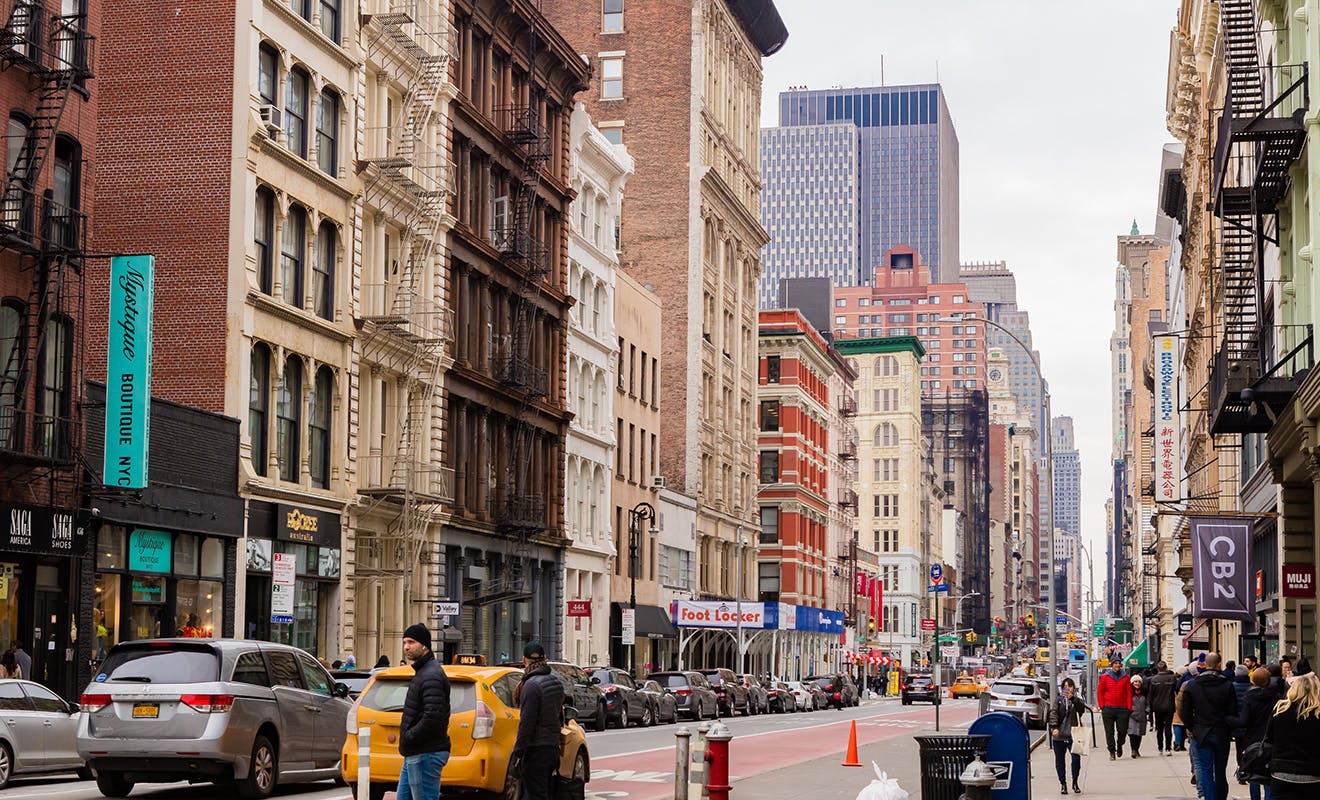The 2020 Updates of the SoHo/NoHo Rezoning Plan
by development site advisors
SoHo was once the artists’ enclave, a haven of opportunity and affordability for the struggling artists of the 60s. Since the widespread migration to this iconic neighborhood, it had transformed into a global hub for luxury retail and high-end fashion. For the first time in 50 years, the City of New York drafted a SoHo/NoHo rezoning plan to update the area’s antiquated zoning laws, allowing low-income New Yorkers a chance to prosper from what Soho/Noho has to offer once more.
Drawn to the soaring ceilings, the abundance of natural light, and cheap accommodations, the artists began to claim the abandoned manufacturing area in the late 1960s. For the next few years, the city turned a blind eye to the hundreds of artists illegally residing in the SoHo buildings zoned for manufacturing. It was not until 1971 when the city began legalizing artist residencies in joint live-work spaces under a provision known as “Joint Live-Work Quarters for Artists” (JLWQA). To qualify, an artist must be certified by the Department of Cultural Affairs (DCLA) and to this day, it is technically illegal to occupy a residential space without a certified-artist tenant within these M1-5A and M1-5B light manufacturing districts.
The rezoning in the 1970s was intended to support the area’s community of artists but it had impeded affordable housing development and caused stiff and expensive processes, such as obtaining a variance or a special permit for land use actions that agree with the neighborhood character. The Envision SoHo/NoHo Rezoning Plan stated, “Since 2000, the city has granted over 90 special permits in Soho and Noho… which were to allow or legalize retail and residential uses… Significantly fewer special permits were granted in adjacent Manhattan neighborhoods.”
Many established businesses have the money and time to go through the tedious, costly, and complex process of special permits. However, these current zoning restrictions hinder the growth of small businesses, increase storefront vacancies, and contribute to the lack of diversity in storefront tenants. In the Department of City Planning’s 2019 Assessing Storefront Vacancy in NYC, SoHo/NoHo had a high vacancy rate averaging at approximately 14% in the 2017/18 period, well above the 5% to 10% vacancy rate the retail industry considers healthy. Broadway and Canal Street had even higher vacancy rates reaching approximately 25%. The DCP commented on their SoHo/NoHo Neighborhood Plan FAQ, “Outdated zoning, along with other market, physical and regulatory factors, likely contributed to the high storefront vacancies in SoHo and NoHo.”
In a newer report, Retail Activity in NYC: COVID Recovery Across 24 Neighborhoods, it found that SoHo/NoHo and Canal Street had the lowest scale of opened businesses in July 2020, and that they are the only two areas out of the 24 neighborhoods surveyed where more than 50% of the storefronts were closed or vacant. Without legalized retail, the prevailing zoning will decelerate the restoration of two New York City’s critical commercial areas.
There have been a range of vocalized concerns over the harmful impacts on the neighborhood’s historic character. The Citizens Housing Planning Council (CHPC) retorted with, “Historic preservation is an important goal, but it should never be used as a weapon to prevent the creation of desperately needed affordable housing.” In their paper, Rezoning For a More SoHo/NoHo Equitable New York City, they shed light on the fact that over 85 percent of the total lot area of the M1-5A and M1-5B special districts falls within a designated historic district and will be protected by the usual review process by the Landmarks Preservation Commission (LPC). In addition, the plan would establish contextual districts to ensure new buildings match the predominant heights and look of the classic loft architecture.
As of today, Soho/Noho is well-known to be one of the most expensive district in the country. According to the CHPC, “A snapshot of active rental and sales listings in Soho/Noho in September 2018 found the average rental apartment to cost over $12,000/month, with an average home sales price of $6.6 million.” The city believes that the plan to include Mandatory Inclusionary Housing (MIH) in SoHo/NoHo would contribute meaningfully to housing affordability and equity. The rezoning will implement a requirement that 20-30% of new residential floor area will be permanently affordable and available to wide range of income levels. As of October 2020, the MIH options being considered for SoHo and NoHo include:
• Option 1: 25% MIH for 60% AMI ($61,440/year for a family of three)
• Option 2: 30% MIH for 80% AMI ($81,920/year for a family of three) or
• Deep Affordability Option: 20% MIH for 40% AMI ($40,960/year for a family of three)
The rezoning will also put a height limit of new buildings. The existing manufacturing zoning has no height limit which has resulted in the creation of towers structured in the SoHo and NoHo neighborhoods. The DCP writes, “The proposed zoning actions would replace the existing unlimited-height zoning with new building envelopes and use contextual zoning tools to guide the size and density of future buildings both within and outside of historic districts.” Artists and other residents living in rent-regulated units, many of whom covered by the Loft Law, will remain fully protected by existing laws. Certified artists under the JLQWA provisions would remain in effect with an addition of a voluntary option to change an existing JLWQA use to a common residential use that will not require a certified artist resident to help direct the need for more flexible occupancies.

